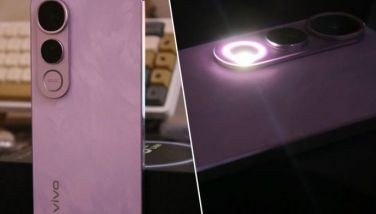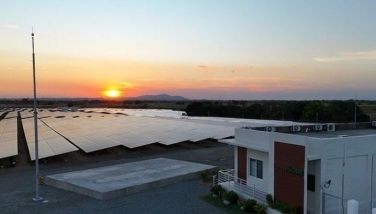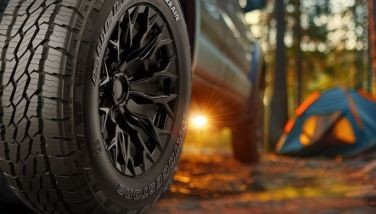Earth alert
November 12, 2003 | 12:00am
If there was one thing that struck us most during our recent trip to Japan for the just-concluded Tokyo Motor Show, it’s the fact that the world we live in is fast running out of resources, and that the automotive industry, once the undisputed most destructive entity to the ecology, is finally making amends for its past transgressions. At the forefront of this "green revolution" is Japan’s biggest player in the worldwide automotive market, Toyota Motor Corporation (TMC).
To put things in perspective, allow us to explain to you exactly how far TMC has gone in the development of technologies which are aimed at helping the environment cope with the advancements mankind is making. As early as 1992 (that’s all of 11 years ago), TMC had already embraced a comprehensive environmental policy, which the company termed as the "Toyota Earth Charter". Since then, TMC has been devoting a substantial amount of its efforts to developing technologies — and subsequently vehicles — that are both Earth- and user-friendly.
After a relatively short span of five years since the development of the Toyota Earth Charter (in December 1997 to be exact), TMC unveiled the Prius, the world’s first mass-produced hybrid vehicle. Hybrid technology helps a vehicle achieve highly efficient operation through sophisticated energy management of a gasoline engine and the use of a secondary battery (see accompanying diagram on page C-4). Needless to say, that particular model of the Prius set global benchmarks for automotive environmental performance.
Since then, TMC has expanded the role of the hybrid vehicle, making such vehicles available for practical use in countries with the infrastructure and the maturity to effectively sustain a realistic market for them. The accumulated sales of Toyota hybrid vehicles have thus already passed the 150,000 mark — and with the introduction of the next generation hybrid system, and the recent release of the new Prius (just last September), things are looking even brighter for both TMC and the environment. In the United States alone, the anticipation has reached fever-pitch as 30,000 orders have already been placed — a target not even TMC had counted on achieving, at least not this early.
During our trip to the Toyota Higashi/Fuji Technical Center at the foot of Mt. Fuji, no less than TMC senior managing director Takeshi Uchiyamada, who served as the chief engineer of the original Prius, led the TMC staff in giving motoring journalists from all over the world a closer look at the new Prius — and its even more advanced hybrid siblings. There, we were introduced to the Fine-N (a new concept fuel cell hybrid vehicle), the CS&S and the SU-HV1 (two new concept hybrid vehicles), which featured different levels of Earth-friendliness. The fuel cell hybrid Fine-N was particularly impressive as it uses the Toyota FC Stack fuel cell technology to make electricity through a chemical reaction between hydrogen and oxygen (see realted story on page C-2).
What we were given then, essentially, was a glimpse at the future of the automotive industry. Several other advancements in the fuel cell hybrid system technology have also enhanced the hybrid driving experience, dramatically increasing power while minimizing environmental impact in hybrid vehicles. Having driven a number of the vehicles at the TMC proving grounds, we can attest to the vehicles’ reliability and "fun driving" dimensions. Small wonder, then, that after making a splash in its native Japan, the Prius is on its way to conquer the United States and Europe.
We then asked our hosts from Toyota Motor Philippines Corporation (TMPC) when such vehicles would be coming our way. Our query proved to be the proverbial spark plug for discussion. To make a long story short, no, we won’t see the Prius and its ilk here in the Philippines, at least not for the next three to five years. But a valid point was raised. In order for the Prius and other hybrid vehicles to make a mark here and help save our environment, we need laws and policies to help us catch up with the rest of the world — and we’re talking about more than just the Clean Air Act. Incentives — like lower tax rates for environment-friendly vehicles — could do the trick. Infrastructure to provide hybrid vehicles’ "fuel" is also necessary, but that — again — takes some serious political will. Unfortunately, in a country where coming up with relevant laws and policies takes a backseat to wielding the power to impeach "unworthy" individuals, that may be too much to ask.
While the rest of the civilized world — not to mention a newly enlightened automotive industry (Honda, General Motors and Ford are also in different stages of hybrid vehicle development) — is busy saving the very planet we all call home, we keep shooting ourselves in the foot, ignoring what should be our priorities and engrossing ourselves in fruitless political banter. In the meantime, poorly maintained vehicles continue their destructive course in our country. Still, all is not lost. The bottom line? If we can’t expect to reap the benefits of such groundbreaking environment-friendly technology yet, the best thing we can do is to keep our vehicles in check. TMC has sounded the clarion call (the Earth alert, if you will), it’s up to us to follow the lead. Be responsible automobile owners (not just drivers) and keep your vehicles in tip-top shape. At least you’d be making a difference, even while we’re all still waiting for the future to come our way.
To put things in perspective, allow us to explain to you exactly how far TMC has gone in the development of technologies which are aimed at helping the environment cope with the advancements mankind is making. As early as 1992 (that’s all of 11 years ago), TMC had already embraced a comprehensive environmental policy, which the company termed as the "Toyota Earth Charter". Since then, TMC has been devoting a substantial amount of its efforts to developing technologies — and subsequently vehicles — that are both Earth- and user-friendly.
After a relatively short span of five years since the development of the Toyota Earth Charter (in December 1997 to be exact), TMC unveiled the Prius, the world’s first mass-produced hybrid vehicle. Hybrid technology helps a vehicle achieve highly efficient operation through sophisticated energy management of a gasoline engine and the use of a secondary battery (see accompanying diagram on page C-4). Needless to say, that particular model of the Prius set global benchmarks for automotive environmental performance.
Since then, TMC has expanded the role of the hybrid vehicle, making such vehicles available for practical use in countries with the infrastructure and the maturity to effectively sustain a realistic market for them. The accumulated sales of Toyota hybrid vehicles have thus already passed the 150,000 mark — and with the introduction of the next generation hybrid system, and the recent release of the new Prius (just last September), things are looking even brighter for both TMC and the environment. In the United States alone, the anticipation has reached fever-pitch as 30,000 orders have already been placed — a target not even TMC had counted on achieving, at least not this early.
During our trip to the Toyota Higashi/Fuji Technical Center at the foot of Mt. Fuji, no less than TMC senior managing director Takeshi Uchiyamada, who served as the chief engineer of the original Prius, led the TMC staff in giving motoring journalists from all over the world a closer look at the new Prius — and its even more advanced hybrid siblings. There, we were introduced to the Fine-N (a new concept fuel cell hybrid vehicle), the CS&S and the SU-HV1 (two new concept hybrid vehicles), which featured different levels of Earth-friendliness. The fuel cell hybrid Fine-N was particularly impressive as it uses the Toyota FC Stack fuel cell technology to make electricity through a chemical reaction between hydrogen and oxygen (see realted story on page C-2).
What we were given then, essentially, was a glimpse at the future of the automotive industry. Several other advancements in the fuel cell hybrid system technology have also enhanced the hybrid driving experience, dramatically increasing power while minimizing environmental impact in hybrid vehicles. Having driven a number of the vehicles at the TMC proving grounds, we can attest to the vehicles’ reliability and "fun driving" dimensions. Small wonder, then, that after making a splash in its native Japan, the Prius is on its way to conquer the United States and Europe.
We then asked our hosts from Toyota Motor Philippines Corporation (TMPC) when such vehicles would be coming our way. Our query proved to be the proverbial spark plug for discussion. To make a long story short, no, we won’t see the Prius and its ilk here in the Philippines, at least not for the next three to five years. But a valid point was raised. In order for the Prius and other hybrid vehicles to make a mark here and help save our environment, we need laws and policies to help us catch up with the rest of the world — and we’re talking about more than just the Clean Air Act. Incentives — like lower tax rates for environment-friendly vehicles — could do the trick. Infrastructure to provide hybrid vehicles’ "fuel" is also necessary, but that — again — takes some serious political will. Unfortunately, in a country where coming up with relevant laws and policies takes a backseat to wielding the power to impeach "unworthy" individuals, that may be too much to ask.
While the rest of the civilized world — not to mention a newly enlightened automotive industry (Honda, General Motors and Ford are also in different stages of hybrid vehicle development) — is busy saving the very planet we all call home, we keep shooting ourselves in the foot, ignoring what should be our priorities and engrossing ourselves in fruitless political banter. In the meantime, poorly maintained vehicles continue their destructive course in our country. Still, all is not lost. The bottom line? If we can’t expect to reap the benefits of such groundbreaking environment-friendly technology yet, the best thing we can do is to keep our vehicles in check. TMC has sounded the clarion call (the Earth alert, if you will), it’s up to us to follow the lead. Be responsible automobile owners (not just drivers) and keep your vehicles in tip-top shape. At least you’d be making a difference, even while we’re all still waiting for the future to come our way.
BrandSpace Articles
<
>
- Latest
Latest
Latest
March 11, 2025 - 11:00am
March 11, 2025 - 11:00am
February 10, 2025 - 2:30pm
February 10, 2025 - 2:30pm
February 6, 2025 - 4:36pm
February 6, 2025 - 4:36pm
December 3, 2024 - 4:00pm
December 3, 2024 - 4:00pm
Recommended

























